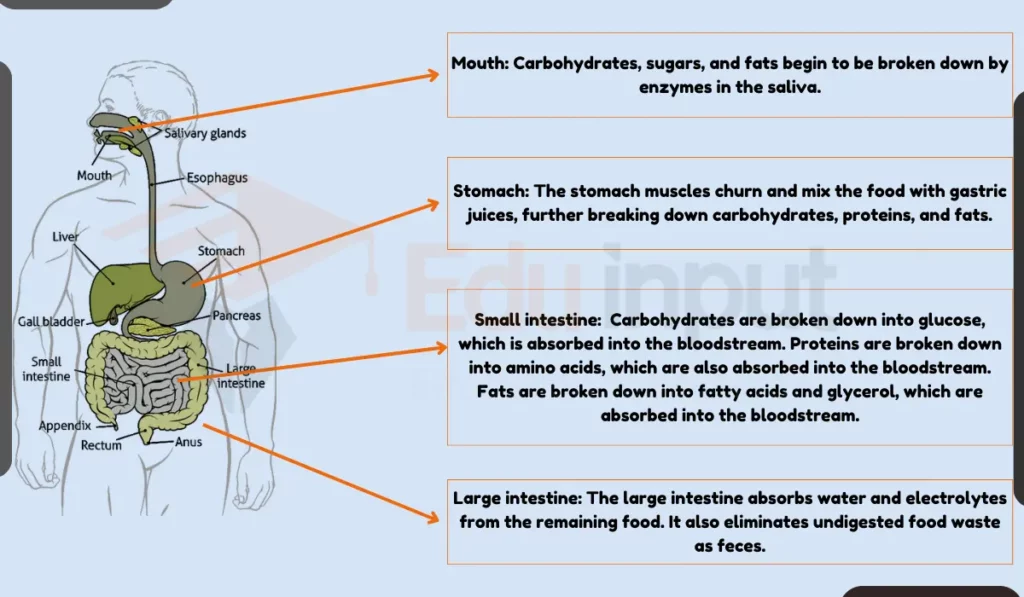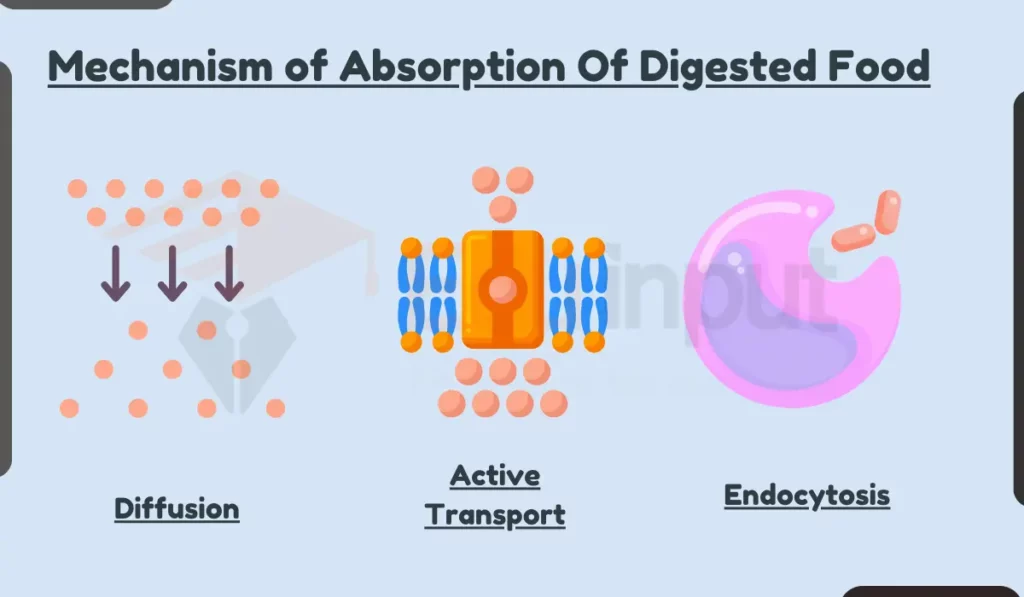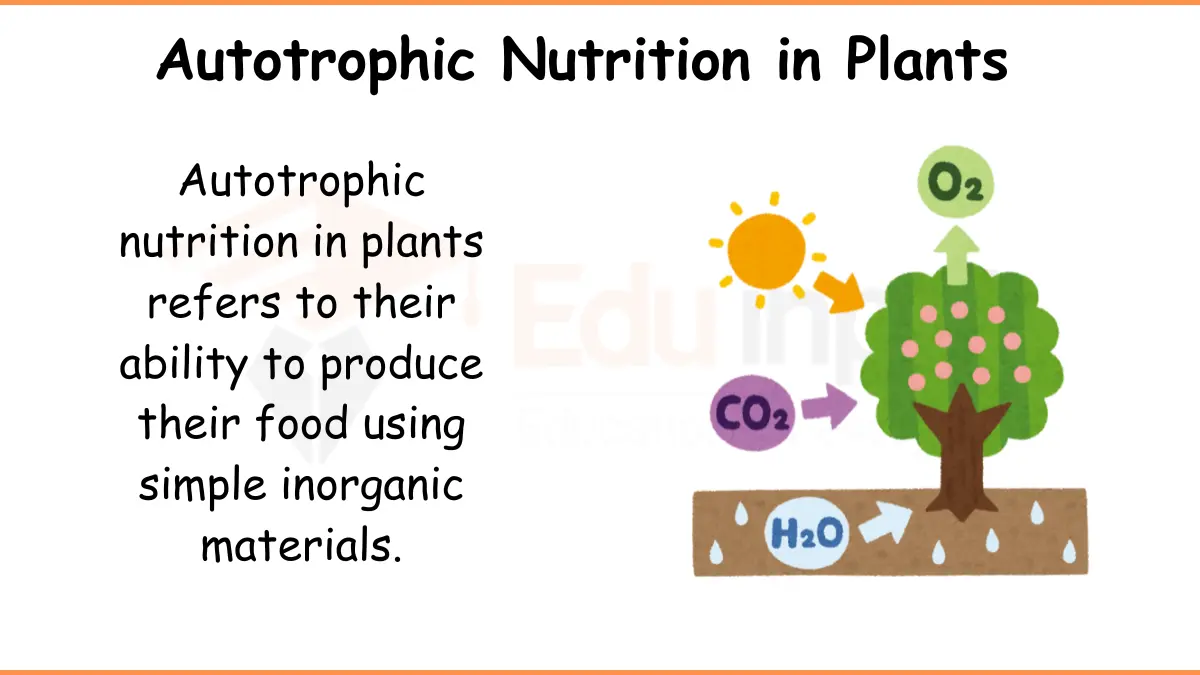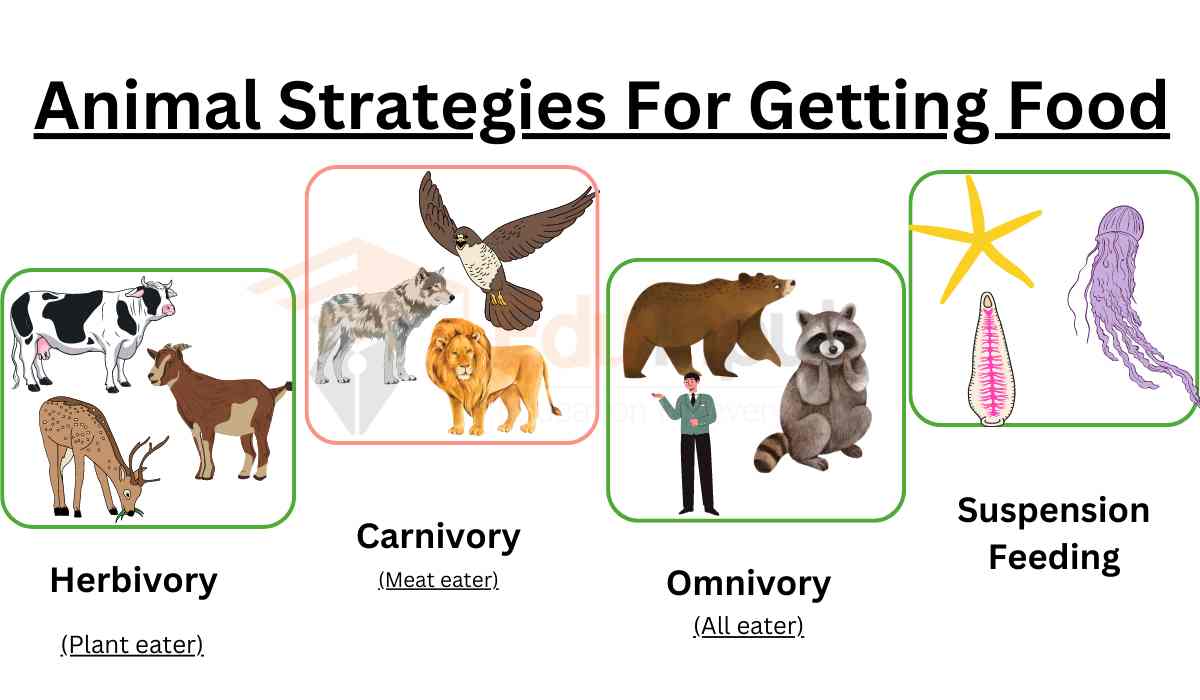Absorption Of Digested Food – How is it Absorbed In Our Body?
Absorption of digested food primarily occurs in the small intestine, where nutrients like glucose, amino acids, and fatty acids are absorbed into the bloodstream to nourish the body’s cells.
Our digestive system is responsible for transforming the food we eat into fuel that keeps our bodies running. But how does this process occur? Absorption is one of the most important step, where the broken-down nutrients are transported from the digestive system into the bloodstream.

Mechanism of Absorption Of Digested Food
Not all digested molecules are created equal. Only smaller, soluble molecules like glucose, amino acids, and certain minerals can effortlessly pass through the walls of the small intestine. Larger molecules, like fatty acids and glycerol, require additional assistance.
There are a few different ways that nutrients from food get absorbed from your intestines into your blood.

1: Simple Diffusion
Small molecules like glucose can easily diffuse or pass through the intestinal wall. They move from where there are a lot of them, like inside your intestines after you eat, to where there are less, like in your blood. It’s kind of like how a smell spreads through the air – the molecules just naturally disperse.
2: Active Transport
Some important molecules like sodium and potassium need to be actively transported. This means they have to be moved even if they’re already concentrated on one side. This is like carrying buckets of water uphill – it takes energy. Cells use energy to pump these molecules through the intestinal wall and into the blood.
3: Facilitated Transport
Some molecules like amino acids and glucose use carrier proteins to help them get through the intestinal wall. The carriers are like tunnels that provide a passageway that only certain molecules can fit through. This allows them to move easily into the blood.
4: Passive Transport
Water moves through the intestinal wall through a process called osmosis. Osmosis uses the difference in solute concentration on each side of the wall to pull water towards the blood, where there are more dissolved particles. It passively flows down this concentration gradient without any extra energy required.
Fatty acids and glycerol are a bit too big to be absorbed directly. They are bundled up into small droplets covered in fat, and we call them micelles. These micelles team up to create bigger groups called chylomicrons, which are like tiny protein-coated balls.
These chylomicrons can move through a special system called the lymphatic system and, in the end, let out their contents into the bloodstream. It’s like they have a special delivery system to make sure our body gets the good stuff from these fatty components.
Read What is Lymph






Leave a Reply